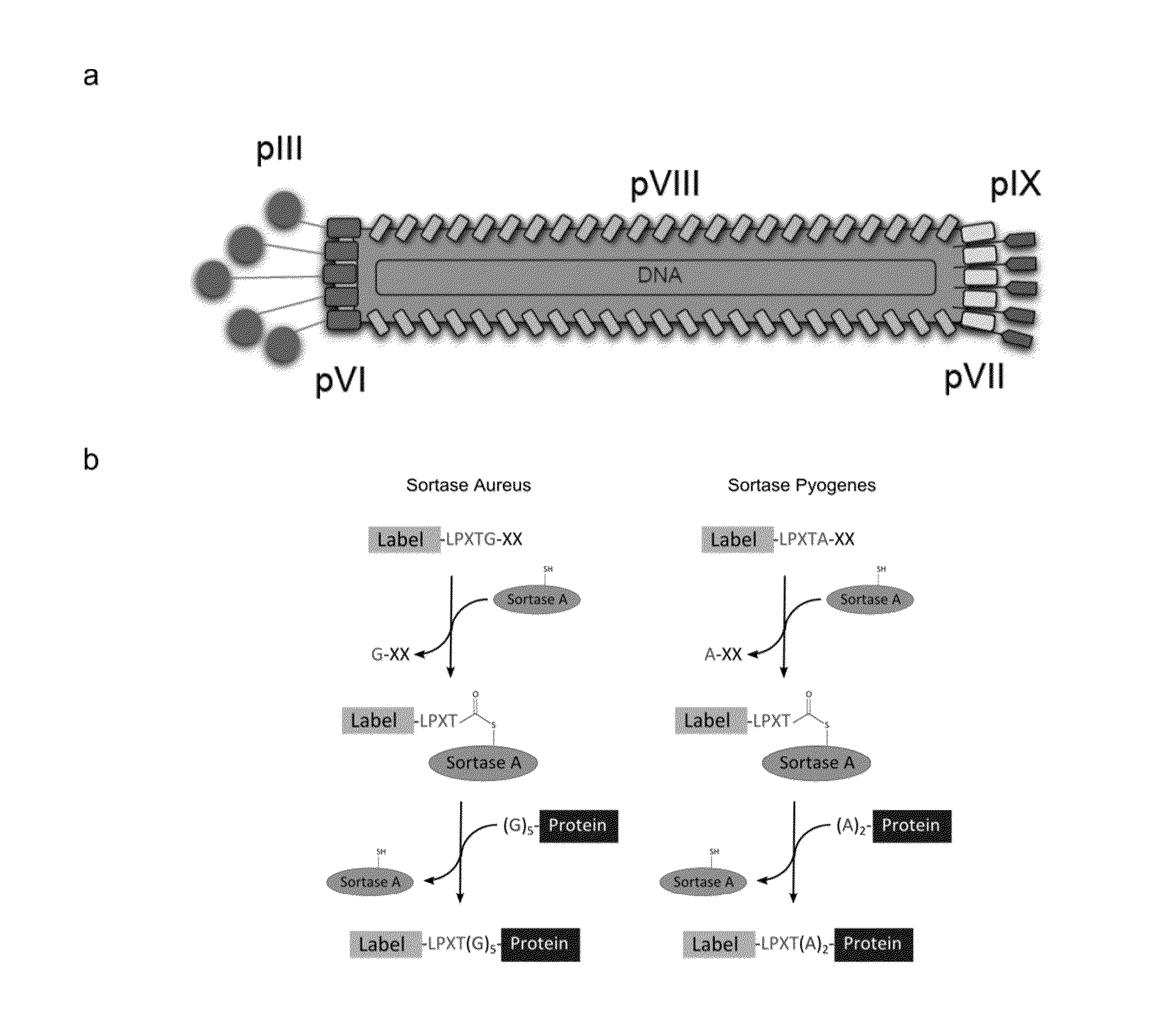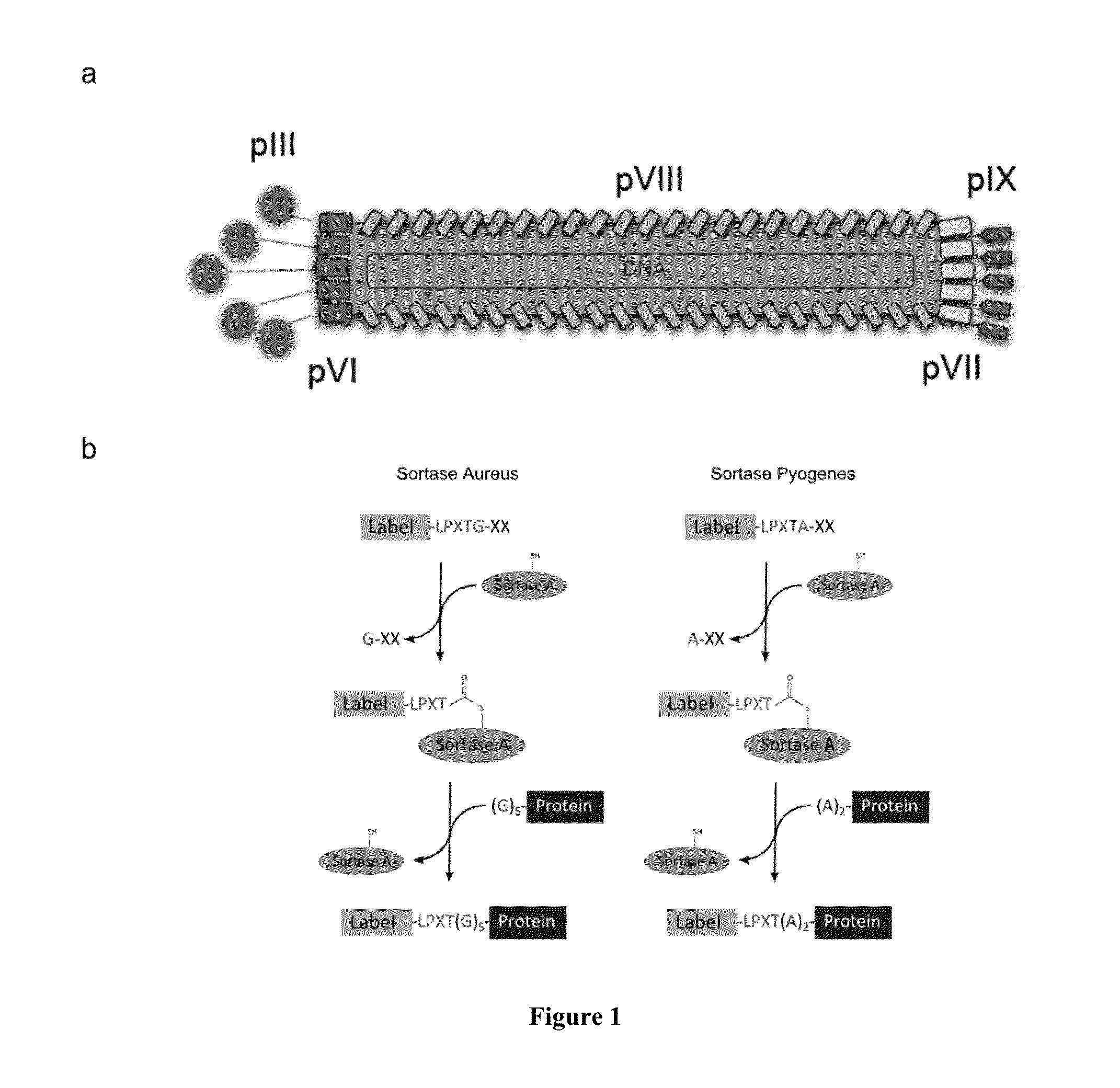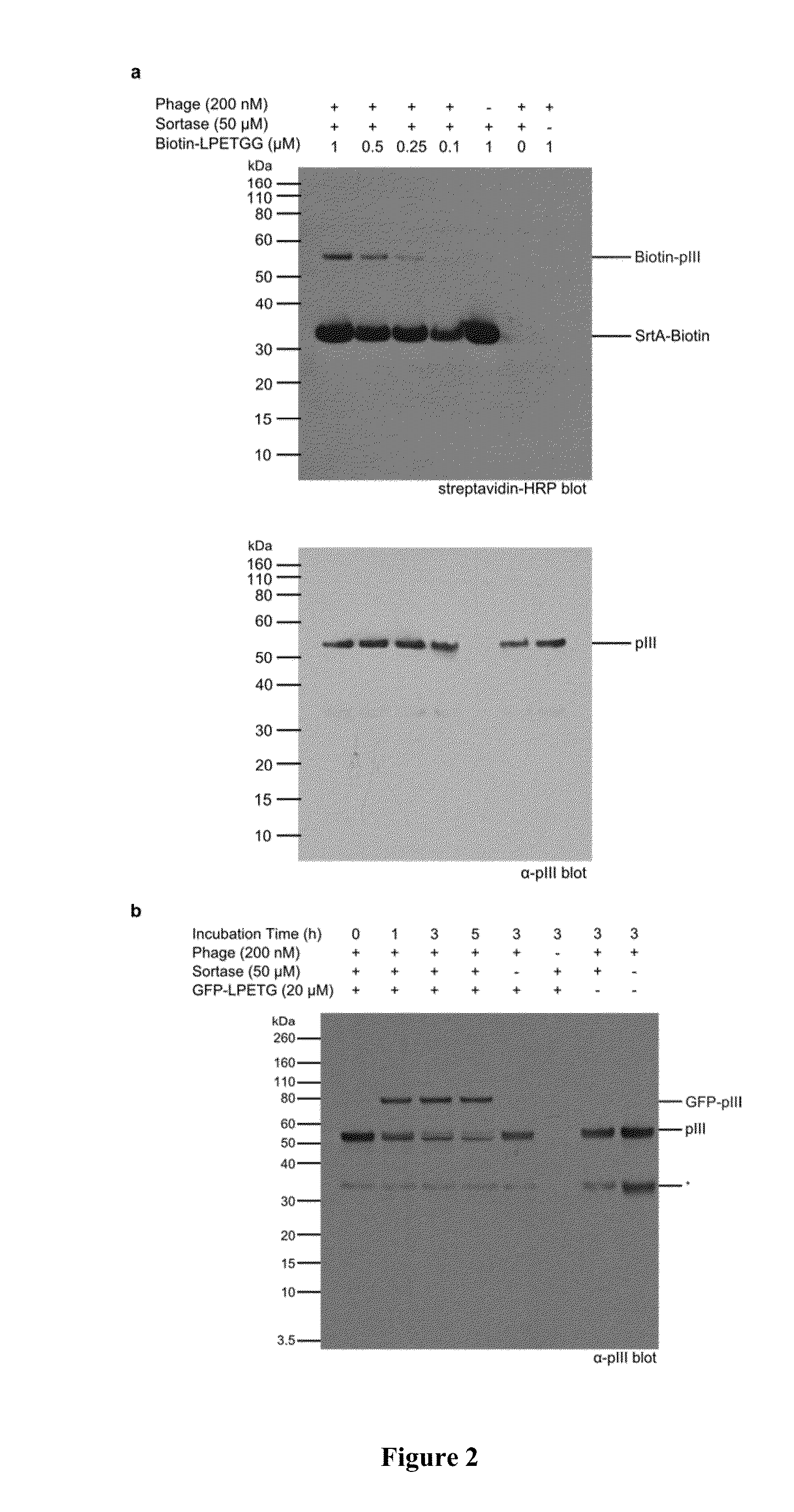Sortase-mediated modification of viral surface proteins
- Summary
- Abstract
- Description
- Claims
- Application Information
AI Technical Summary
Benefits of technology
Problems solved by technology
Method used
Image
Examples
example 1
Sortase-Mediated Modification of M13 Phage Surface Proteins
Experimental Procedures
[0163]Generation of the M13 Phage Constructs.
[0164]The oligonucleotides used to design the different phage constructs are compiled in Table 3. The G5-pIII phage (SEQ ID NO: 77) was engineered by inserting the G5pIIIC and G5pIIINC (SEQ ID NO: 77) annealed oligonucleotides into the M13KE vector (New England Biolabs), previously digested with EagI and Acc65I restriction enzymes. To construct the A2G4-pVIII phage, the M13SK vector40 was digested with PstI and BamHI restriction enzymes and the A2G4pVIIIC (SEQ ID NO: 9) and A2G4pVIIINC (SEQ ID NO: 9) annealed oligonucleotides were inserted. To engineer the G5HA-pIX construct (SEQ ID NO: 77), the 983 vector was used. This vector was created by refactoring the M13SK vector so the pIX and pVII genes are not overlapping. Upon digestion of this vector with SfiI, the annealed G5HApIXC and G5HApIXNC (SEQ ID NO: 77) oligonucleotides were inserted. The G5-pIII-A2-pVI...
example 2
Orthogonal Labeling of M13 Minor Capsid Proteins with DNA to Self-Assemble End-to-End Multi-Phage Structures
[0263]A major goal of synthetic biology is to control and program biological molecules to perform a desired function, such as the organization of materials to create devices.1 In this context, the self-assembling capsid proteins of M13 bacteriophage have been explored to form nanowire structures,2-3 which have been used to build battery and solar devices.4-5 M13 bacteriophage is an attractive building block for more complex multi-material devices such as transistors and diodes, because its major capsid protein (pVIII) can been engineered to bind and nucleate different materials.2,4,6
[0264]The building of more complex materials requires construction of multi-phage scaffolds, but this has been hampered by the inability to freely manipulate the major capsid protein located in the body of phage and the four minor capsid proteins located at the ends of the phage (pIII, pVI, pVII, ...
PUM
 Login to View More
Login to View More Abstract
Description
Claims
Application Information
 Login to View More
Login to View More - R&D
- Intellectual Property
- Life Sciences
- Materials
- Tech Scout
- Unparalleled Data Quality
- Higher Quality Content
- 60% Fewer Hallucinations
Browse by: Latest US Patents, China's latest patents, Technical Efficacy Thesaurus, Application Domain, Technology Topic, Popular Technical Reports.
© 2025 PatSnap. All rights reserved.Legal|Privacy policy|Modern Slavery Act Transparency Statement|Sitemap|About US| Contact US: help@patsnap.com



